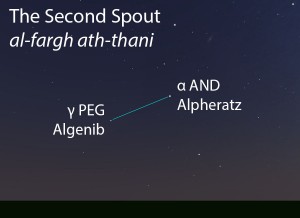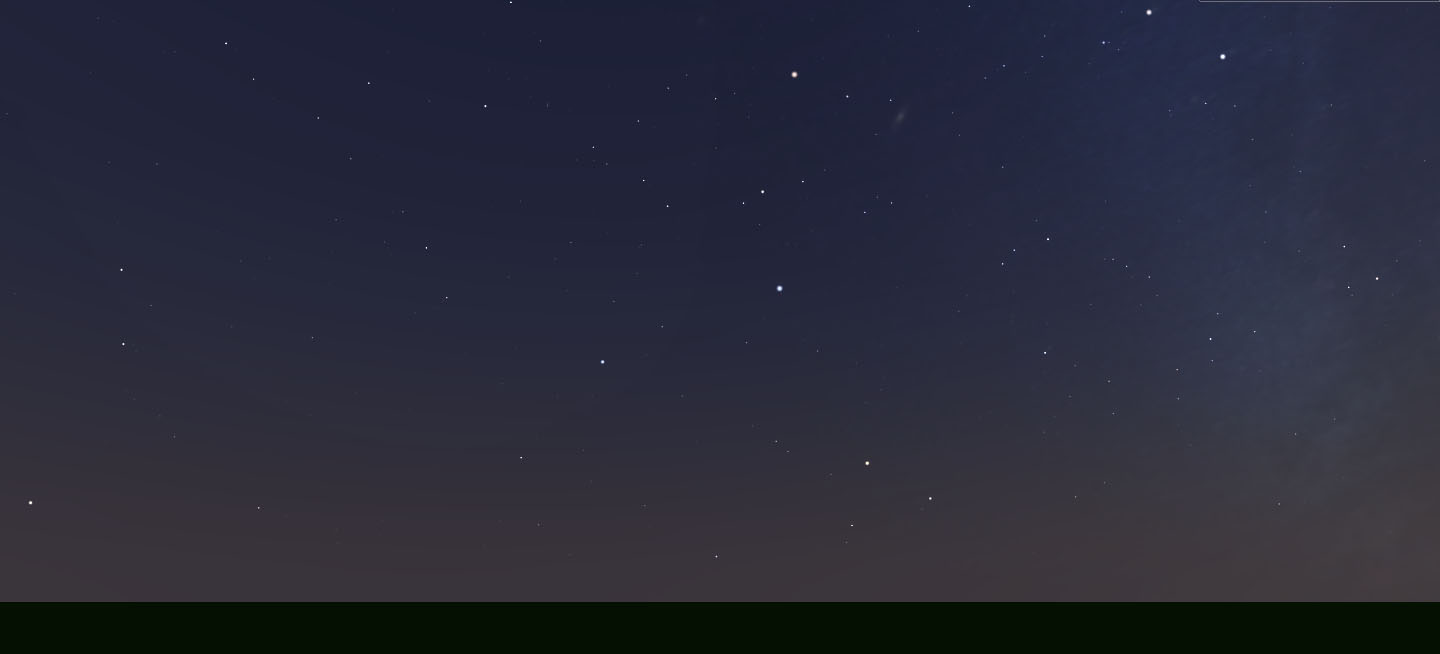Star Names
The Second Spout (al-fargh ath-thani)
The Last Spout (al-fargh al-akhir)
The Rear Spout (al-fargh al-mu’akhar)
The Second Spout is one of Two Spouts (al-farghan) of the square-shaped Well Bucket (ad-dalw), which is composed of four bright stars. Ancient Arab well buckets were made from a large leather pouch, and the ends of two intersecting, perpendicular wooden crossbars were fitted into the mouth of the pouch, forming it into a square shape. On account of this shape, each of the four sides could be used as a spout. The Second Spout is the second and last pair of spout stars to rise and set.

The Second Spout (al-fargh ath-thani) as it appears in the west about 45 minutes before sunrise in early October. Sky simulations made with Stellarium.
Appearance
The eastern-most two of four bright stars that form the shape of a large, near-perfect square, known in modern times as the Great Square of Pegasus. Both stars are blue-white.
Modern Identification
α AND/δ PEG, (Alpheratz/Sirrah), blue-white star, magnitude 2.06
γ PEG (Algenib), blue-white Beta Cepheid variable star, magnitude 2.83v
Of these two stars, Algenib is the one that lies closest to the path of the moon through the sky.
Timing
The two stars of the Second Spout do not rise or set at the same time. Ibn Qutayba (d. 879 CE) reported that the Second Spout was said to rise on the morning of March 22 and set on the morning of September 22. On account of the precession of the equinoxes, today we can expect to observe the Second Spout setting in mid-October and rising in late March, as seen from the latitude of Tucson. (See How to Observe on the About page for more on this topic.)
Rain Stars
These two stars are the first rain stars of the year, but in that calendar they are seen as two of the Crossbars of the Bucket, not as one of its Spouts:
The Rear Two Crossbars of the Bucket (al-‘arquwatan al-mu’akharatan min ad-dalw, العرقوتان المؤخرتان من الدلو)
Also: The Lower Crossbar of the Bucket (‘arquwat ad-dalw as-sufla, عرقوة الدلو السفلى)
Lunar Stations
In early listings of the lunar stations, the Second Spout is the first station of the year. This was later changed to the 27th lunar station after the stations were adjusted to begin with the vernal equinox. The stars of the Second Spout match the Hindu nakshatra called Uttara Bhadrapada.
Related Stars and Celestial Complexes
The Second Spout is part of the Well Bucket (ad-dalw, الدلو) folkloric celestial complex.

